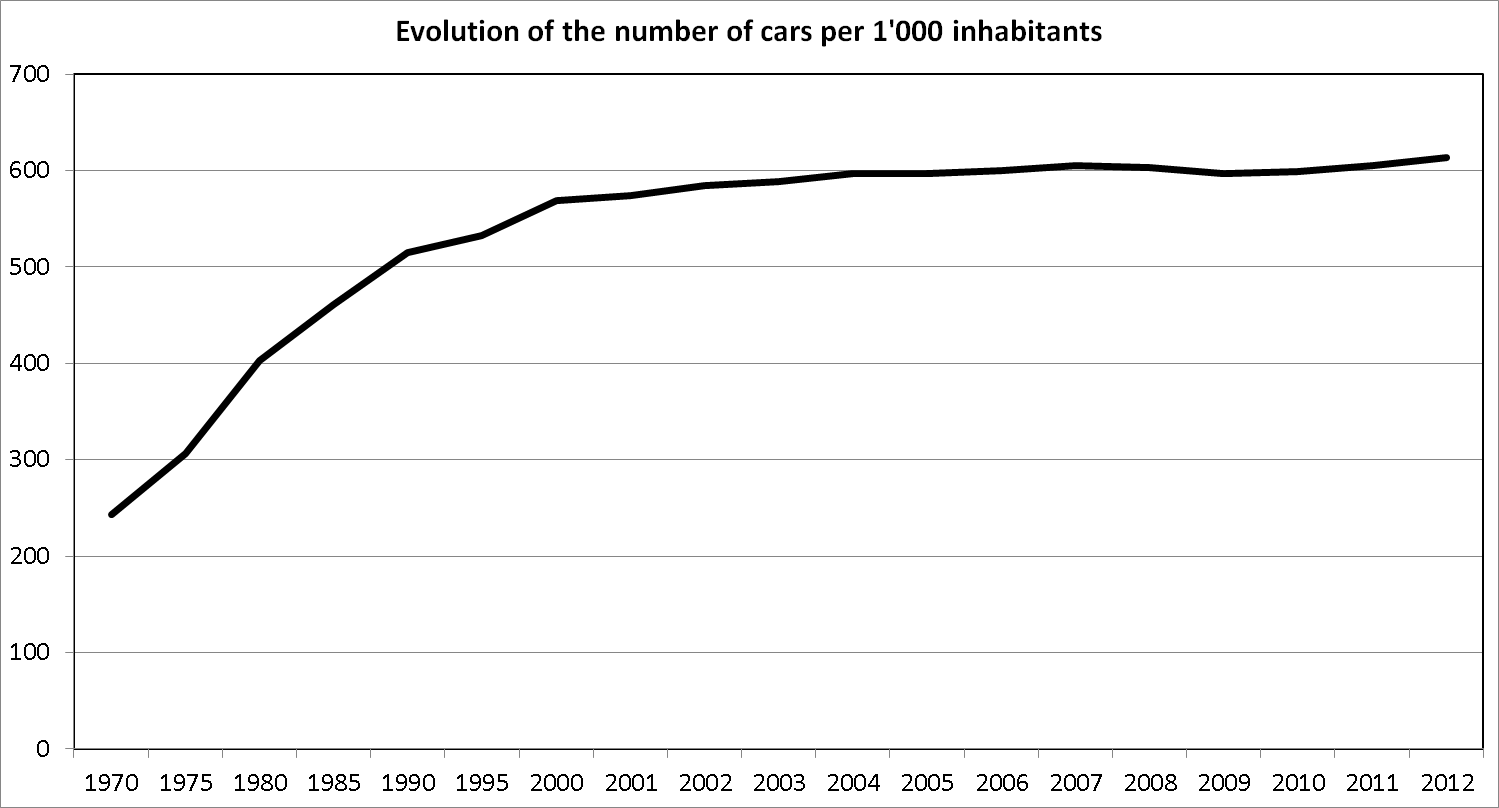In Switzerland, transport represents approximately 8% of the household expenses, about 800. - CHF per month. Significant savings are possible. In 2012, there were nearly 5 million cars in Switzerland and 61.3% of the population had one. The road network in Switzerland is longer than 71'000 km.
Traffic in Switzerland has evolved considerably since the 1970s. Indeed, the proportion of cars per 1'000 inhabitants increased by 126%. This chart allows you to see this phenomenon.

Many people wonder how to save fuel in times of crisis. There is one thing we don’t think about: tires! Indeed, tires play an important role in the consumption of a vehicle. The resistance of tires to rolling is worth about 30% of the total consumption.
Car manufacturers have become aware of this phenomenon and Michelin, who was a pioneer in this area, has launched his first generation of tires called ‘green’ in 1991. This first generation allowed to save fuel but it had shortcomings in the road holding. Twenty years and four generations later, according to Michelin this problem is completely solved.
According to Michelin, the fuel saved thanks to the installation of four Michelin Energy Saver reaches 0.2 l/100 km, that is to say 4 grams of CO2. This decrease in consumption generates a saving of 150.- CHF in the average lifespan of the tires, which is estimated at 45'000 km.
Here is a list of green tires, which is by no means exhaustive:
Carpooling consist in sharing his vehicle on occasional or regular drives. It is a friendly, economical and environmental way to travel. Before going for a drive together, drivers and passengers set the amount of each person’s contribution for the drive. Carpooling allows considerable financial savings and decreases in carbon emissions.
Some countries favor carpooling and offer spaces where people can leave their car or wait for their passengers. In Switzerland, there are such spaces.
The practice of carpooling spreads rapidly. It has several advantages:
Switzerland has a main website of carpool
CO2 or carbon dioxide is a greenhouse gas. The increase in this kind of gases causes the climate change that we are experiencing now; it has a very negative effect on the environment. Talking about CO2, the various means of transport reject this gas.
The easiest way to reduce CO2 emissions is to leave one’s car in the garage and to use one’s bike or go on foot. Of course, this is impossible when transporting something big/heavy or when travelling over long distances. For long trips we recommend to use public transport, including the train which discharges low CO2 emissions.
If you have a phobia about public transport, or if you prefer travelling by car because it is more comfortable, try to take passengers and limit the number of drives. This method is called carpool.
Last but not least, another way to limit CO2 emissions is to change one’s old car, including non-catalyzed vehicles which pollute a lot, for a more recent car that emits little carbon dioxide, such as hybrid or electric cars.
| Year | Event |
|---|---|
| 1830 | The businessman Scottish Robert Anderson Matcha developed the first electric vehicle, which looks rather like a kind of sleigh |
| 1891 | The American William Morrison built the first electric car thirty years after the intervention of the rechargeable lead acid battery |
| 1897 | Establishment in New York of a taxi company. In 1900, its 1000, only electric vehicles ply the streets |
| 1900 | More than a third of cars in circulation are electric. Other cars run on gasoline or the steam |
| 1908 | The placing on the market of Ford T in petrol, two times cheaper, led to the gradual disappearance of the electric |
| 1966 | To reduce the pollution the American Congress encourages the construction of four-wheeled without fuel but the production doesn’t take off |
| 1997 | Nearly a hundred years after the presentation of the first hybrid model in Liège, Toyota launched the Prius, produced in series |
| 2011 | The Bolloré group implements "Autolib", a service of electric automobiles in self-service (or autoportage) in Paris |
The electric car is considered by many as the future of the automobile. Despite all the advantages that it gives, it has a mixed ecological balance. Judge yourself by reading our comparison table below.
| + | - |
|---|---|
| Simple operation, fewer parts, less failures | Extraction of lithium (main component of batteries) has an impact on the environment. It contains solvents and causes acid rain and droughts |
| No emission of CO2 by rolling | The production of electricity emits CO2 |
| Durability of the car 3 x higher than gasoline and diesel engines | The price of the vehicles is still very high |
| The electric consumption is not very high. Over one year, with 12’000 annual km, the consumption is lower than an electric water heater | The lithium is rare. Supply will go to term, through the use of recycled lithium |